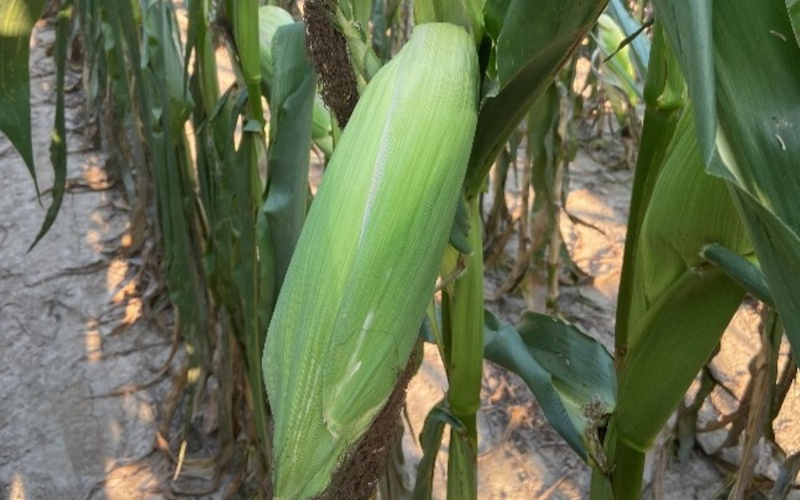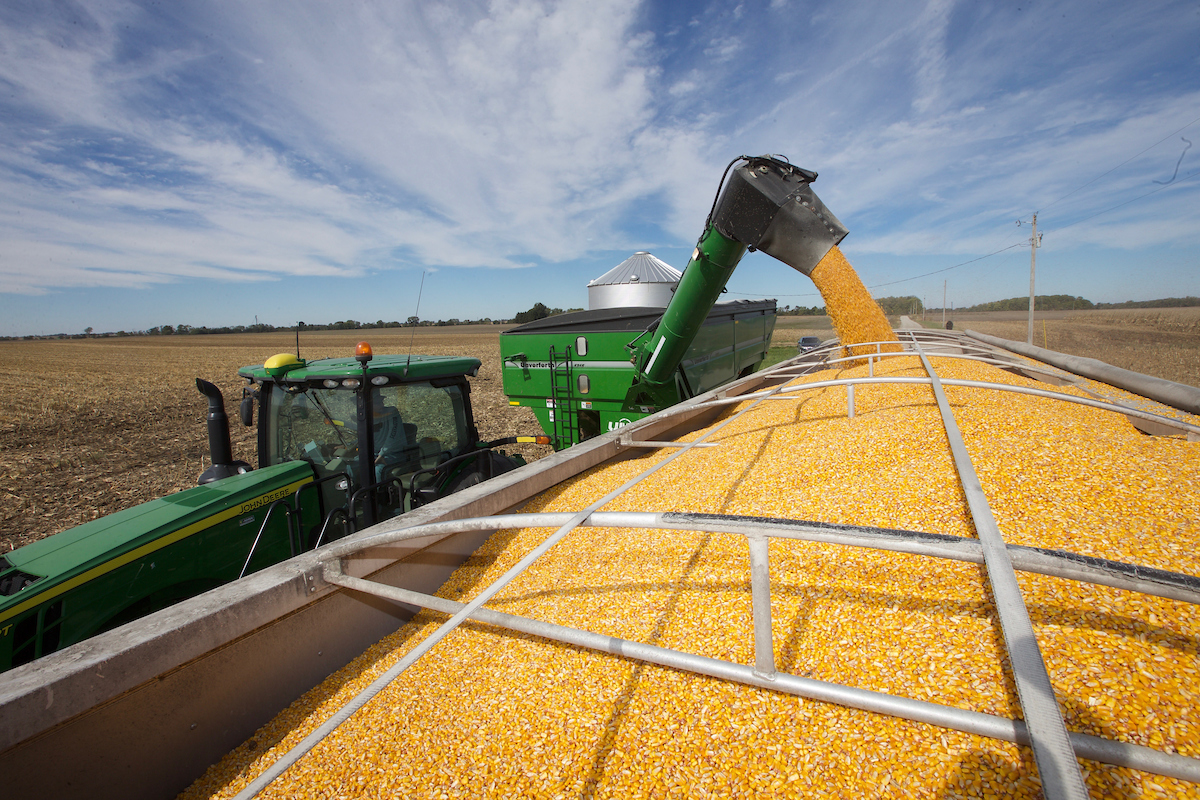The Corn Mesocotyl and Assessing Abnormal Growth
As a young agronomist, one of the first things I learned was that when assessing corn emergence and stand establishment following planting, is that it is always important to have a shovel with you. Why? Because often the reasons for poor emergence or stand establishment lie beneath the soil surface. The young corn root system is essential for early-season growth and stand establishment and is comprised of various important plant components which include the radicle (first emerging root from the tip end of the kernel), the seminal roots, the nodal roots, and the mesocotyl.
The mesocotyl is identified as a white, stem-like plant organ that develops during seed germination and connects the corn seed to the base of the coleoptile (protective sheath which encloses the young corn leaves as they push through the soil surface). One of the main roles of this plant organ is to elongate and push the coleoptile through the soil surface. Mesocotyl growth helps to facilitate deeper planting depths and will cease growth following exposure to solar radiation and light, which is due to hormonal changes (the length of the mesocotyl can also help you determine how deep a corn seed was planted). In addition, this organ also facilitates the movement of energy and nutrients from the seed endosperm to the developing seedling. It is important to remember, that up until the young corn plant is around the V3 growth stage, a majority of the plant’s nutrients and energy is coming from the seed. Therefore, maintaining a healthy mesocotyl is absolutely crucial during the period of corn emergence and stand establishment.
Failed crop emergence, uneven emergence, and stunted plants can often be a direct result of poor mesocotyl growth and health. For example, severe mesocotyl damage to young corn seedlings (before nutritional dependance is shifted to the nodal root system) can cause complete plant death due to the loss of energy and nutrient transfer to the young seedling from the kernel. Common symptoms of mesocotyl issues are presented in Figures 1 and 3. Figure 1 shows a common abnormal mesocotyl symptom known as ‘corkscrewing’, which occurred following early May corn planting in 2023. A ‘corkscrewed’ mesocotyl is typically caused by soil crusting (restricted crop emergence), chilling injury, herbicide injury (e.g., cell growth inhibitors such as acetochlor), kernel position (embryo face down) in the furrow, or large fluctuations in soil temperatures. The corkscrewed symptoms shown in Figure 1 are likely a result of cold soil temperatures and wide fluctuations in soil temperatures following planting. As shown in Figure 3, 4” bare soil temperatures ranged from 42o F to near 80o F in the first week following planting. The ‘corkscrew’ appearance of the mesocotyl following cold soil temperatures is caused by damage to the outer surface layers of the mesocotyl and since these damaged outer surface layers become less elastic, the elongation of the mesocotyl becomes uneven, and the ‘corkscrewing’ occurs. Another important note is that the corn also received a pre-emergence application of acetochlor immediately following planting, which may have exacerbated the observed symptoms.

Figure 1. Corkscrew mesocotyl growth symptoms observed in corn seedlings planted on May 3, 2023 in West Lafayette, IN. Photo taken by Rachel Stevens, ACRE farm manager.

Figure 2. Maximum (red line), average (gray line), and minimum (blue line) 4” bare soil temperatures from May 2, 2023 to May 14, 2023 at the Purdue University Agronomy Center for Research and Education (ACRE) in West Lafayette, IN. Data acquired from: https://ag.purdue.edu/indiana-state-climate/purdue-mesonet/purdue-mesonet-data-hub/
In addition, to chilling and/or herbicide injury, severe mesocotyl damage can also occur from excessively high starter fertilizer rates (especially those with higher salt contents). Figure 3 shows corn during the 2022 growing season that was damaged by an application of nitrogen fertilizer through the planter at too high of a rate. This damage caused severe plant stunting and failed crop emergence throughout the field.

Figure 3. Severe corn mesocotyl damage caused by excessive nitrogen starter fertilizer rates at planting during the 2022 growing season.
Overall, it is always important to pay attention to root and mesocotyl health in young corn seedlings, especially before stand establishment and the plant transition to the nodal root system is finished. Therefore, if poor emergence and/or stunted plants are observed, remember to get out your shovel and look belowground, this may just give you an answer to your problem.
Additional Resources:
Nielsen, R.L. 2022. Emergence problems in corn. Corny News Network. Purdue Univ. Ext. https://www.agry.purdue.edu/ext/corn/news/timeless/EmergenceFailure.html
Niu, L., R. Hao, X. Wu, and W. Wang. 2020. Maize mesocotyl: Role in response to stress and deep-sowing tolerance. Plant Breeding. 139:466-473.
Rodriguez, M.N.S., and G.I. Cassab. 2021. Primary root and mesocotyl elongation in maize seedlings: Two organs with antagonistic growth below the soil surface. Plants. 10:1274.
Thomison, P. 2017. “Corkscrewed” mesocotyl development causing emergence problems in corn. C.O.R.N. Newsletter. Ohio State Univ. Ext. https://agcrops.osu.edu/newsletter/corn-newsletter/2017-13/%E2%80%9Ccorkscrewed%E2%80%9D-mesocotyl-development-causing-emergence-problems#:~:text=%E2%80%9CCorkscrewed%E2%80%9D%20mesocotyl%2Fcoleoptile%20development,responsible%20for%20this%20abnormal%20growth.






